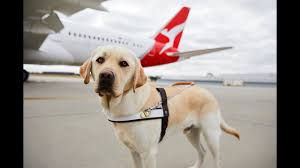POTTY ON CUE - WHEN YOU NEED YOUR PUP TO POTTY
- Belinda N. Ahern

- Feb 27, 2022
- 4 min read
Sometimes you just need your dog to go outside and do their business with no play or sniff time. Here is how we can teach our pups not to meander and just "GO".

Some dogs want to be at a certain location or have to do multiple tests before committing to relieving themselves. Most of the time it doesn't really matter but there are other times when it can be frustrating, annoying or an emergency which can lead to potty accidents. Teaching a potty cue can be extremely helpful for road trips, vet visits, poor weather conditions and a long list of scenarios!
Sometimes you just need your dog to "GO NOW" and so here is an easy way to teach your pup to potty when you actually need it to happen.
CAPTURING
Starting to teach your cue takes a bit of patience and an understanding of a training method called capturing. Teaching your dog to pee and poop on cue is as simple as adding a verbal marker to a behavior that your dog already does. This makes training so easy because you have multiple opportunities to practice every day.
SELECT YOUR WORDS (CUE):
To make thing clear to your dog, first figure out what verbal cue you want to use for peeing and another word for pooping. You can pick any word you want. Common examples Potty- pee - poo - showtime - business... you get the gist, and you can get as creative as you want. Now you consistently add your chosen verbal cue as your dog is ACTIVELY going potty. You can just use your word or if you use treats and a clicker, use the audible marker, and treat for the peeing or pooping.
THE TRICK IS IN THE TIMING:
Step 1: Anticipate when your dog is going to need to potty, such as after play or naps, and be prepared with treats when you take your dog out to go.
Step 2: While your dog is looking for the right spot to pee or poop, don’t say anything.
Step 3: When your dog starts to go, say the word (your cue) while they are actively going....
Step 4: It’s important to only use your cue when your dog is actively peeing/pooping but wait until they are nearly done to prevent them from becoming distracted and stopping early.
Step 5: After a few days, most dogs start to make the association between the verbal cue and going potty, you then start to use your word right as your dog starts to go.
For example, as your dog stops circling and squats to potty, say “POTTY” or whatever cue you have selected. When they finish, praise with something like “yes” or pair with a click and treat.
Step 6: After several days or weeks of building understanding with your new words and your knowledge of clearly knowing when your dog is about to start doing their business, start testing the cue. At first, bring your dog to a quiet spot and cue them to potty. When they pee/poop, give lots of praise and rewards.
CONSISTENCY
Consistency is always important with dog training. You need to be extremely consistent when pairing your dog pottying with your verbal cue of choice.
When they fully understand the cue, they will “try” to potty anytime they hear the cue (even if they don’t really need to go) by lifting their leg, quickly squatting, or trying to squeeze out a small amount of pee or poop.
Be sure to highly reward these efforts, as it’s a clear sign that your dog is understanding your cue.
CAUTION: DON’T SPOIL THE CUE:
Although most people’s motivation for teaching their dog to potty on cue is to avoid spending a long-time outside waiting, it’s important that during the learning phase we don't shortchange their outdoor walk or playtime.
Being outside in the yard or on a walk is usually a happy time for your dog and so they want to spend more time doing it.
If you rush back into the house right after they pee or poop your dog may begin to think that listening to your cue stops the fun.
This can give the new cue a negative association or make your dog reluctant to perform the desired behavior.
PROOFING YOUR NEW BEHAVIOR:
Dogs are situational learners, so unless you practice a new skill in different places, they may not be able to offer the behavior in new environments. When you’re teaching your dog to be reliable with their potty on cue, it’s important to work the skill in as many different locations as possible. Start in your dog’s usual easy potty spots like your backyard or their favorite stop on a walk. Then try asking for a potty in a novel place that they would not normally associate with going potty.
By practicing the potty cue in a variety of circumstances, your dog will be able to generalize the skill. Just like learning to sit. That will be especially helpful if you ever need them to go on a potty pad inside because of weather or illness, or in another place that may seem strange to them.




Comments